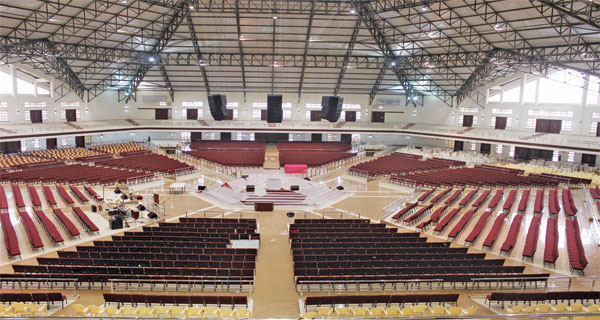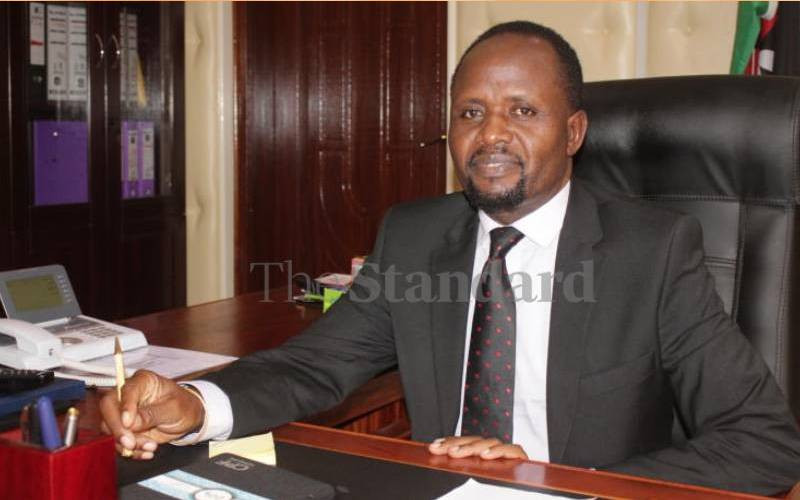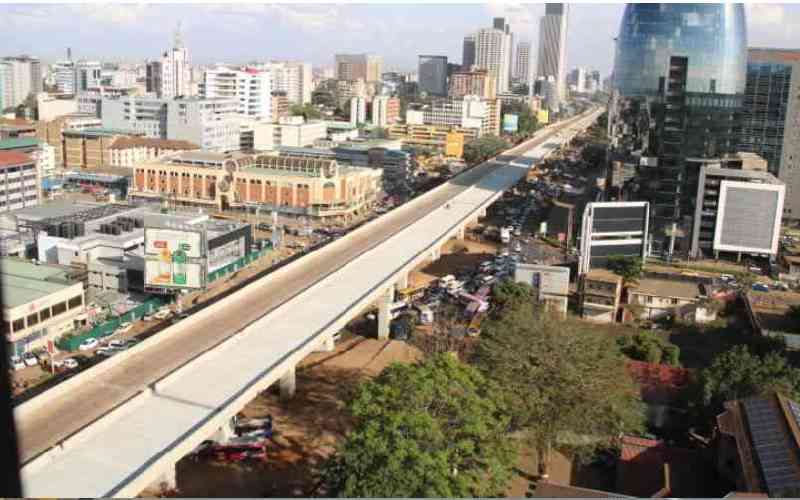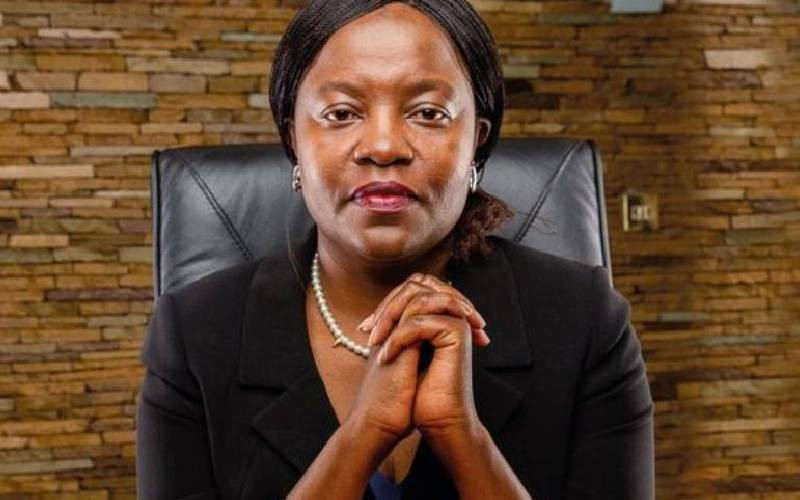 |
|
Winners Chapel auditorium. INSET: Pastor David Adeoye. [PHOTOS: COURTESY] |
By WANGECI KANYEKI
The Winners Chapel Sanctuary on the New Likoni Road in Nairobi’s South B, is a gigantic landmark. Similar to the typical traditional communal gathering in African setting of a fireplace in the homestead, the church is built in the shape of a hexagon, giving the congregants a clear view of the pulpit at the centre of the building.
As the church grew to about 10,000 members, their sanctuary at Adams Arcade on Ngong’ Road became too small to accommodate the swelling numbers. That is when they bought the land on which the new sanctuary is standing.
According to senior pastor David Adeoye, the 15-acre land was purchased in the year 2000, and application sought for change of user from light industry to church.
The Winners Chapel architectural plan is adapted from a master plan from parent church, Faith Tabernacle, a 50,000-seater church in Lagos Nigeria. According to the former chairperson of the church building committee, Samuel Kimani, a contractor by profession, the architect for the master plan was Nigerian, Pastor Azubike Nwoke who has been endorsed locally.
The structural engineer was Iyk Ikechuku, who was also endorsed by local engineers. The construction started in 2005. The technical team leader Simon Njuguna says the six-sided sanctuary has a floor space of more than 17,000 square metres and sits on 2.5 acres. The strong corners act as anchorage points to support the roof, which approximately weighs 350 tonnes.
The shear walls at the six corners take up the horizontal loading of the roof trusses, creating a clear span of 100 metres without any obstruction of pillars in the sanctuary. Njuguna says this is the largest clear span in East and Central Africa.
The church has a sitting capacity of 12,000 but it can accommodate more people depending on seating arrangements. Thanks to engineering ingenuity, a balcony extends inward into the sanctuary as a cantilever of 5.42 metres to safely carry a load of 4,000 people.
Sink borehole
The six corners of the roof have concealed storage tanks of 40,000 litres each. Plans are underway to sink a borehole to provide efficient supply of clean water. An underground water tank will also be constructed to harvest rainwater with a capacity of 400,000 litres.
Kenya Power supplies electricity, but there is also a back up generator. Plans are in place to install solar and wind alternatives to save on energy. A toilet block or what they call the executive chamber of release is a one-storey building that sits on half-acre land and houses 66 toilets for the ladies and 25 for the gents and urinals enough for 45 men at one go.
The black cotton soil on the land proved a challenge to build on, so columns were sank to the rock to support the building. This created a space above the foundation, which could either be backfilled with approved soil or hard-core, which would have been expensive and the space unusable.
There was a structural redesigning and a basement was created facilitating multiple utility rooms for conference rooms and Sunday school classes. There are also tunnels, which the pastors use to access the sanctuary.
The basement is well lit. The doors bring in enough light and air into the basement and the opaque glass blocks on the slabs also aid in filtering more light.
The church has six entrances with seven double doors at each entrance. This eases the in-flow and out-flow of the congregants. The concrete paved driveway and parking has a capacity of 700 cars and is designed to minimise the conflict between pedestrians and incoming or outgoing vehicles. It will be extended to accommodate more vehicles. The project, which would have taken two years to build if fully funded, took eight years as the church raised funds without assistance from international donors. It was officially opened in April.
Stay informed. Subscribe to our newsletter
 The Standard Group Plc is a
multi-media organization with investments in media platforms spanning newspaper
print operations, television, radio broadcasting, digital and online services. The
Standard Group is recognized as a leading multi-media house in Kenya with a key
influence in matters of national and international interest.
The Standard Group Plc is a
multi-media organization with investments in media platforms spanning newspaper
print operations, television, radio broadcasting, digital and online services. The
Standard Group is recognized as a leading multi-media house in Kenya with a key
influence in matters of national and international interest.
 The Standard Group Plc is a
multi-media organization with investments in media platforms spanning newspaper
print operations, television, radio broadcasting, digital and online services. The
Standard Group is recognized as a leading multi-media house in Kenya with a key
influence in matters of national and international interest.
The Standard Group Plc is a
multi-media organization with investments in media platforms spanning newspaper
print operations, television, radio broadcasting, digital and online services. The
Standard Group is recognized as a leading multi-media house in Kenya with a key
influence in matters of national and international interest.










